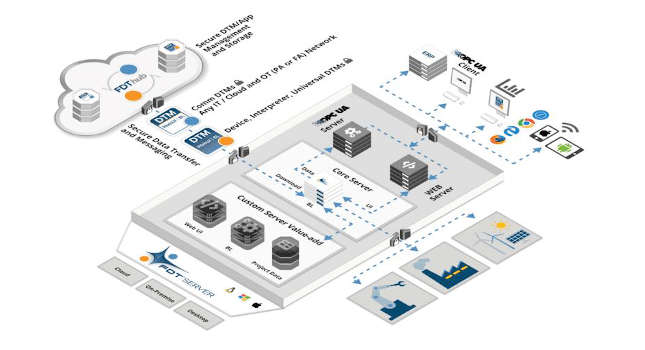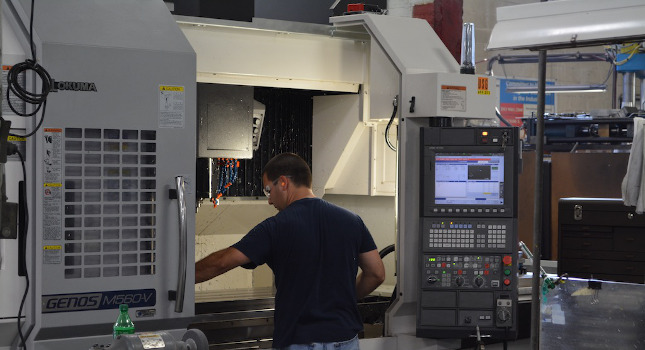A recent Plant Engineering editorial on today’s skills shortage (July 1999, p 10) prompted a reader to respond with the question: “As parents, why would you encourage your children to join the ‘skilled workforce?'” Together, the editorial and the question prompted Author Tom Huey to give the matter of skills shortages some serious consideration. His thought-provoking remarks on this issue are presented here.
Why would a parent encourage his children to join the skilled workforce ? I can give four good reasons: job security, earnings potential, quality of life, and job satisfaction.
Growing roots
Job security may not now be at the top of the hit parade for every 20-yr-old entering the workforce, but eventually it will be for many. In a recent poll by the National Association of Colleges and Employers (NACE), 72% of the respondents said that they would like the security of long-term employment with one company. The concept of steady employment that allows a person to grow on the job and become part of a community is appealing to many people, including the newest additions to the workforce.
Up and coming Generation Xers see “the job” as a means to an end, as a way of financing recreational and family activities. They see their skills as the marketable commodities that will allow them to have the quality of life that they will use to redefine “success.” If the area in which they work is the extended family’s home base, or if they enjoy the recreational activities available in the area, they may never be disposed to move.
However, mobility has long been the key to survival for today’s management team. Very few managers with the desire to advance have the opportunity to live their lives in one place. But the skilled workforce can settle down and grow roots. In our community, there is such a shortage of skilled labor that if skilled workers lose jobs because one plant closes, they can drive down the street and move quickly into another job.
What is the “skilled workforce?” From our perspective as employers, the skilled workforce is the group of workers who have completed high school and also received some post-secondary training. It is the fastest-growing segment of the workforce today.
In 1950, 60% of the workforce was unskilled, and only 20% required a college degree to be a part of the “professional” ranks. In 2000, there is still only room for 20% to have a college degree, but 65% of the workforce needs to be skilled. Peter J. Pestillo, Ford vice chairman, said recently, “Our industry is on the brink of a devastating shortage of talent….At every level, in all job categories, we need more good people and we need them today.” Lifetime job security in an industry or skilled trade may replace lifetime employment as the definition of “security” to the workforce.
In the past decade, job security for the white-collar team was tied to company growth as well as mobility. But times are changing. Projected employment growth in the next 10 yr will be half of what we experienced in the last 10 yr: 20% instead of 40%, according to information from the Improved Career Decision Making (ICDM) program. That reduction is partly due to the ramping-up of the massive enterprise resource planning (ERP) computer systems that have exploded onto the scene. These complex systems do much of the work that was given to entry-level white-collar workers in the past.
The computer revolution is just getting started and we are already seeing the ability of computing power to eliminate entry-level white-collar jobs. By 2005, bookkeeping, accounting, and auditing clerks will have 133,000 fewer jobs available. As the work of the SAPs and JD Edwards of the world begin to bear fruit, the placement problems for recent college graduates will only increase.
These are confusing times. On one hand we have record low unemployment, but on the other we have recent college graduates who can’t find work. In southeast Tennessee, we have about 3% unemployment. That’s good news and bad news. The good news is that anyone who wants to work can find a job. The only people in this area who are unemployed are the hard-core unemployable who are truly unable to work. The bad news is that we have college graduates working in the fast food industry, flipping burgers and going to night school because they have found that they can’t get a job without either experience or an advanced degree.
Making money
Perhaps surprisingly, the skilled workforce actually has an advantage in earnings potential over the college graduate. In a 1996 study, the Florida Department of Education found that the average starting annual salary for a community college graduate with an AS degree was $29,008 compared to $24,814 for a graduate of a state university with a bachelor’s degree.
It gets worse. Many college graduates enter the workforce earning less than $23,317, the median for high school graduates. More than 20% of the college graduates in retail sales and more than 40% of those in service industries earn less than their counterparts who have only a high school education. In fact, almost 20% of all college graduates start out earning less than $23,317. This statistic is a culture shock to a generation that has been taught that to succeed, you must get a college degree. Their expectations of $40,000 starting salaries evaporate in the bright light of reality.
Living well
Quality of life may be the key indicator of success for the skilled workforce. In today’s world, Generation X is moving in with a new set of assumptions about what defines success. Success for the new kid on the block may well be a 40-hr week, no travel, and family focus. At a time when management is expected to work 60 hr or more a week, we should anticipate that Gen Xers will not be so willing to work extra hours without compensation.
Family focus is starting to be discussed in many corporations, not because it is the right thing to do, but because it has bubbled up from the workforce as a critical issue. We all know that no one has ever confessed on a death bed, “Gee, if I had only spent more time at work,” but Gen Xers really understand the importance of the quality of life away from work.
Yesterday’s workers defined themselves by what they did at work. Tomorrow’s workers are defining their identities by what they do away from the job. Gen Xers bring a skill set to the job that they see as a marketable commodity. If they do not get the “total package” from one company, they will take their skills and move on. It may sound cold, but they learned from watching their parents struggle in an era of downsizing that loyalty is a relative concept. Gen Xers will never love the company more than it loves them.
Being satisfied
The last of these four points is the job satisfaction that the skilled workforce can have doing tangible work with daily visible results. There is something to be said for seeing a finished product leave your work area at the end of the day. For the paper-pushing white-collar crowd, there may never be an empty in box . There is always something more to do, and more and more office workers take the job home with them, physically and mentally.
Many actually carry paperwork home, but most of the damage to the family is the result of the mental baggage that is carried home from the office. The white-collar workers deal with conceptual problems that often have no clear answers, and the struggle to solve those problems does not stay inside the office. There is a lot to be said for a world in which the bolts always tighten to the right and loosen to the left.
Encountering reality
In addition to job security, earnings potential, quality of life, and job satisfaction, there is one other reason to encourage our youth to enter the skilled workforce: reality . Only one out of ten high school graduates will ever receive a college degree. That 10% will be competing for jobs in a pool that has not grown as rapidly as the need for skilled labor. In many occupations, they are now struggling to find work when skilled workers are being actively recruited.
We do face a critical shortage of skilled labor in this country. The solution is to change locally, and technical preparation programs around the country are actively involved in developing the skilled labor pool. This concept helps employers grow their own skilled labor locally by partnering with local schools, seeking out the best candidates, and working with them while they are still students to develop qualified workers. The need for college degrees is a myth. The skilled workforce is the reality of the future.
Tom Huey is a West Point graduate who also holds a master’s degree in Human Resources Development. He has been with Duracell since 1996 and has just recently taken on responsibility for development and training of skilled workers at eight company plants worldwide in four skill areas: mechanics, millwrights, tool and die makers, and industrial control technicians. Tom also works with the Manufacturing Skill Standards Council (MSSC) to help promote development of workforce skill standards for manufacturing and related installation and repair workers. For more information about MSSC, visit its web site at www.msscusa.org. Tom will be addressing other aspects of skilled worker development in future issues of Plant Engineering.



